Low Water: Watching the Effects of Climate Change at Lake Powell
by Bob Harris
Lake Powell is going, going, but not quite gone, at least not yet. Water managers throughout the American West are working to keep the turbines spinning at numerous power dams, lest we start burning coal and natural gas to supplement the loss of hydropower. Still, what I saw at Lake Powell on 21 April was astonishing. What I heard from managers there was at times hopeful, and at times distressing. All of what I can report will have long term effects on population growth and economic development in the Upper and Lower Colorado River basins.
The last time I was at Halls Crossing on Lake Powell was seven months earlier, 21 September 2021. The lake level had fallen from 3547’ to 3522’ – a drop of 25’. Where my bride and I had launched a small rubber raft at Hall’s Crossing in September, there was now a visible cliff face with a drop-off of over 20’.
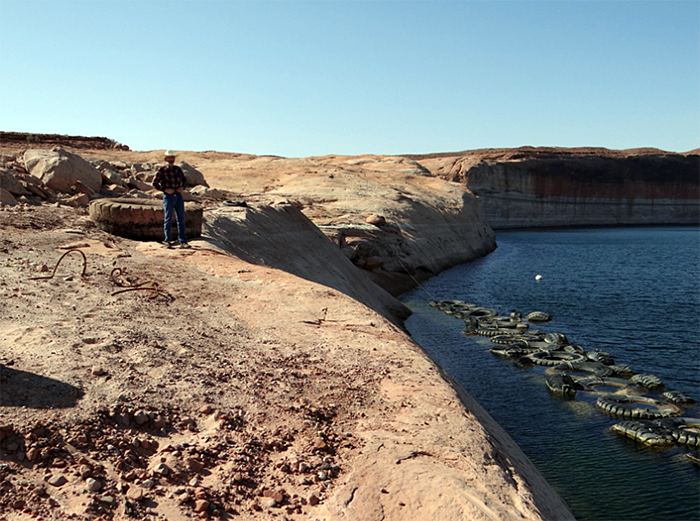
Halls Crossing Boat Launch, 21 April 2022. Where I am standing was underwater last September. The tire behind me was visible in the shallows. Just 24 hours after my bride took this image, Lake Powell hit low water – 3522.24’ above sea level. This low lake level had not been seen since 1967, thirteen years before Lake Powell hit full pool.
There was current at Hite rather than an accessible lake, but the boat ramp there had long ago become remote from the lake surface.
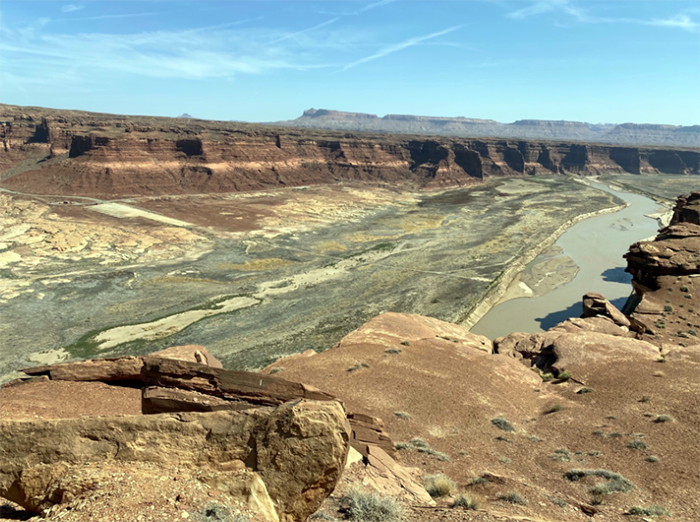
Hite, Utah, 20 April 2022. The former boat ramp is at the upper left. The pre-lake river channel is visible between the current channel and the boat ramp. The river cut its new channel through silt deposits at Hite as Lake Powell effectively disappeared from Hite and the Colorado River ran current there once again.
The Halls Crossing Ferry has not turned a propeller in a year as the ferry ramps are inaccessible.
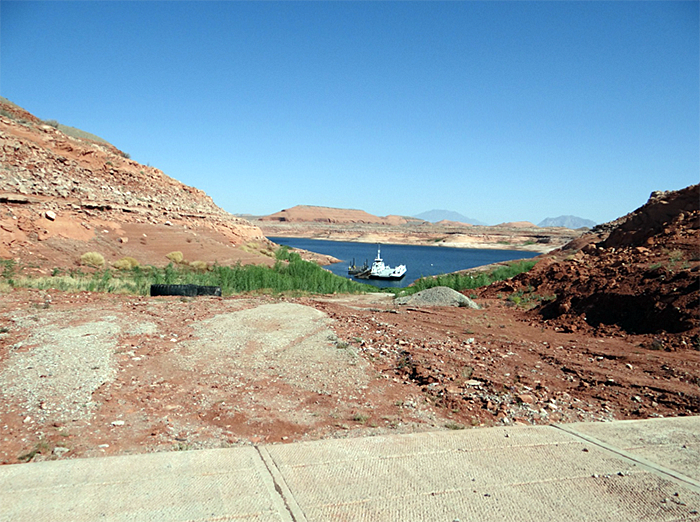
Halls Crossing Ferry, 21 April 2022. The ferry is unable to operate at lake levels below 3575’ – 50’ higher than the level seen here. The State of Utah operates the ferry as State Route 276, but there is no projected date to resume ferry service. The end of the ferry ramp is in the foreground.
The pool where my bride used to swim as a young child is now an inexplicable graveyard for white plastic chairs. And we wondered why.
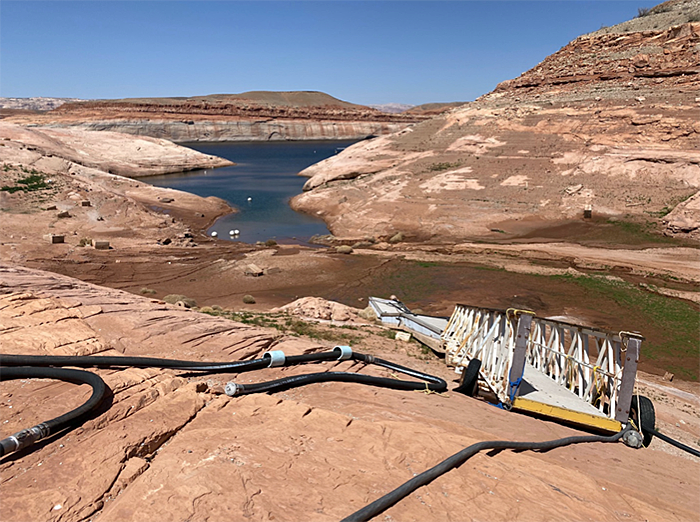
Halls Crossing, Utah, 21 April 2022. The high-water mark is visible at the upper right and across the lake where the “bathtub ring” exposes white sandstone. As Lake Powell has receded, desert varnish has begun to color the sandstone red once more. An amazing amount of trash litters the landscape here. White plastic chairs and a white plastic bench are visible to the truly sharp-eyed reader. My bride and I counted three dozen white chairs scattered about this area, once a cove busy with small boats and swimmers.
Water managers were predicting that they could bring the surface of Lake Powell up 30’ from the April low if: 1) there was sufficient runoff, 2) water could be diverted from other reservoirs, and 3) the backup generating plan for Lake Mead could be implemented. For a time, their plan seemed to be working. Lake Powell rose over 17’ before turning lower once more.
The Colorado River looked to be running well at Grand Junction this spring; in the Blue Heron section, the river had overflowed onto our bicycle path here. Flaming Gorge has been lowered to 72% of capacity, and Blue Mesa and McPhee reservoirs reached their highest level in a year, but at roughly 60% of capacity. Lake Mead is at only 28% of capacity but still generating electricity.
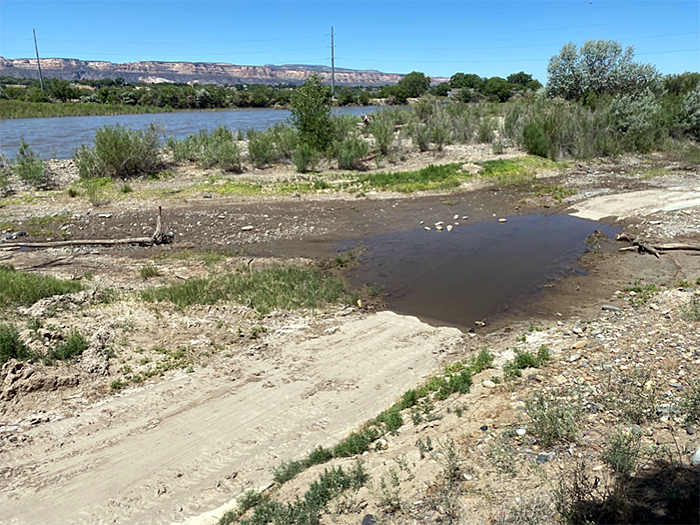
The Colorado River at Grand Junction, Colo., 15 June 2022. The Blue Heron Section of our local bicycle trail system has been overtopped by the Colorado River in wet years before. But I did not expect to see this in 2022. The river was running well, a hopeful sign, at least for now.
On the other hand, with predictions for the future including lower snowpack in the Colorado Rockies, higher evaporation and sublimation rates, as well as lower stream flows, using hydrological parlor tricks cannot go on indefinitely.
The effects of our climate future on agriculture and real estate development will affect Arizona first. As communities grapple with greater demands on smaller water supplies, those seeking to meet local planning requirements to guarantee future water supplies for new development will face increasing challenges.
Or perhaps, the low water levels will be ignored, and development will go on unimpeded. We as a whole have been able to turn a blind eye to the effects of climate change for decades. But sooner or later there will be a reckoning for all of us living out on the Colorado Plateau and in the cities of the Front Range.
